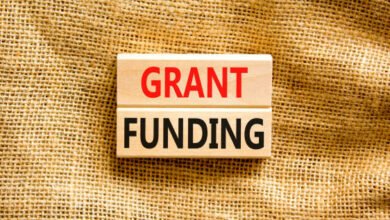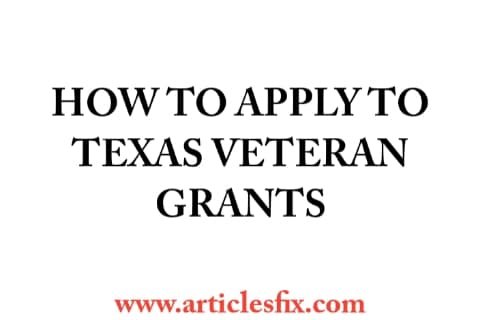NY State First Time Home Buyer Grants Guide 2024.

Have you been thinking of how to navigate the world of NY state first-time home buyer grants? Worry no more because our comprehensive guide outlines eligibility, application processes, and tips to secure your dream home with financial assistance tailored for first-time buyers.
The State of New York Mortgage Agency (SONYMA) extends comprehensive support to first-time home buyers across New York State. Through SONYMA, individuals can access affordable mortgage loans and down payment assistance, facilitating their path to homeownership.
SONYMA’s affordable housing programs cater to various property types, including single-family homes, multi-unit homes, condominiums, cooperatives, and manufactured homes. It’s important to note that investment properties are not eligible for these assistance programs.
NY State first-time home buyer grants are financial assistance programs designed to help individuals or families purchase their first home in New York State. These grants may offer various forms of support, including down payment assistance, closing cost assistance, or low-interest loans. Eligibility criteria typically include income limits, residency requirements, and the status of being a first-time home buyer. These grants aim to make homeownership more accessible and affordable for individuals or families who might otherwise struggle to afford a home in New York State.

Types of Grants Available for First Time Homebuyers In NY State
1. Down Payment Assistance Grants:
These grants provide funds to cover a portion of the down payment required to purchase a home, helping first-time buyers bridge the gap between their savings and the total purchase price. The New York down payment assistance grants includes:
SONYMA Down Payment Assistance Loan (DPAL)
The DPAL program extends down-payment assistance to qualified borrowers through a secondary mortgage, requiring its utilization alongside an existing SONYMA program. These funds can also cover mortgage insurance premiums. Assistance ranges from a minimum of $1,000 to a maximum of 3 percent of the purchase price, capped at $15,000 or $3,000, whichever is greater.
Borrowers under DPAL incur no interest or monthly payments. The standout feature is loan forgiveness after 10 years, provided the borrower maintains SONYMA funding and residency in the home.
Local homebuyer assistance programs
In addition to state programs, there may be home buying assistance available at the local level, such as in the city or county where you intend to reside. For instance, in New York City, the HomeFirst Down Payment Assistance Program offers eligible first-time homebuyers assistance of up to 20 percent of the home’s purchase price—whether it’s a house, condominium, or cooperative—up to $100,000, to use towards a down payment or closing costs.
2. Closing Cost Assistance Grants:
Closing cost assistance grants are financial programs designed to help homebuyers cover the closing costs associated with purchasing a home. These grants can be crucial for individuals or families who may have limited funds available for upfront expenses when buying a home. Here are some examples of closing cost assistance grants:
HUD’s Homeownership Voucher Program:
This program provides assistance to low-income individuals and families who are first-time homebuyers. Qualified applicants receive financial assistance for down payments and closing costs.
Neighborhood Stabilization Program (NSP):
NSP grants are offered by the Department of Housing and Urban Development (HUD) to revitalize communities affected by foreclosure and abandonment. These grants can be used to cover closing costs for eligible homebuyers purchasing properties in targeted areas.
State Housing Finance Agencies (HFAs):
Many state HFAs offer closing cost assistance grants as part of their first-time homebuyer programs. For example, the Pennsylvania Housing Finance Agency (PHFA) provides closing cost assistance grants to eligible homebuyers through its Keystone Home Loan Program.
Local Government Programs:
Some cities and counties offer closing cost assistance grants to help stimulate homeownership and community development. For instance, the City of Chicago’s Home Buyer Assistance Program provides grants to cover closing costs for low- to moderate-income homebuyers purchasing properties within city limits.
Nonprofit Organizations:
Various nonprofit organizations across the country administer closing cost assistance grants to support affordable homeownership initiatives. For example, Habitat for Humanity affiliates may offer grants to help qualifying families cover closing costs when purchasing Habitat-built homes.
3. Low-interest Mortgage Loans:
Some programs offer low-interest mortgage loans specifically tailored for first-time home buyers in NY State. These loans typically come with favorable terms and lower interest rates compared to traditional mortgages, making homeownership more affordable.
Low-interest mortgage loans are home loans with below-market interest rates designed to make homeownership more affordable for borrowers. These loans are often offered by government entities, nonprofit organizations, or specific lenders with a focus on providing affordable housing options. Here are some examples of low-interest mortgage loan programs:
Federal Housing Administration (FHA) Loans:
FHA loans are backed by the Federal Housing Administration and typically offer lower down payment requirements and more flexible qualification criteria than conventional loans. FHA loans often come with competitive interest rates, making them an attractive option for first-time homebuyers with limited funds.
Veterans Affairs (VA) Loans:
VA loans are available to eligible veterans, active-duty service members, and qualifying spouses. These loans are guaranteed by the Department of Veterans Affairs and often feature lower interest rates compared to conventional loans, as well as no down payment requirements for qualified borrowers.
USDA Rural Development Loans:
The USDA offers home loans with low-interest rates and zero down payment requirements through its Rural Development program. These loans are available to eligible borrowers purchasing homes in designated rural areas and can be an affordable option for those seeking homeownership in rural communities.
State Housing Finance Agency (HFA) Loans:
Many state HFAs offer low-interest mortgage loan programs to assist first-time homebuyers and low- to moderate-income borrowers. These programs may provide below-market interest rates, down payment assistance, or other incentives to help make homeownership more attainable.
Fannie Mae and Freddie Mac Affordable Loan Programs:
Fannie Mae and Freddie Mac, two government-sponsored enterprises, offer affordable loan programs with competitive interest rates for low- to moderate-income borrowers. These programs may include options for low down payments and flexible qualification criteria.
Nonprofit Organization Loans:
Some nonprofit organizations, such as Habitat for Humanity affiliates or community development organizations, offer low-interest mortgage loans to support affordable housing initiatives. These loans may be tailored to specific populations or communities in need of housing assistance.
Local Government Programs:
Certain cities or counties may offer low-interest mortgage loan programs to encourage homeownership and revitalization efforts in targeted neighborhoods. These programs may feature below-market interest rates, down payment assistance, or other financial incentives for eligible borrowers.
4. Forgivable Loans:
Forgivable loans are loans provided to first-time home buyers that may be partially or fully forgiven over time, typically if the homeowner remains in the property for a certain number of years. This can effectively reduce the overall cost of purchasing a home.
Here are some examples of forgivable loan programs:
Homeownership Voucher Program (HVP):
Administered by the Department of Housing and Urban Development (HUD), the HVP offers forgivable loans to eligible low-income individuals and families to assist with down payments or closing costs when purchasing a home. The loan is forgiven after a certain number of years, typically if the homeowner remains in the home as their primary residence.
Neighborhood Stabilization Program (NSP):
NSP grants provided by HUD to state and local governments may include forgivable loans as part of efforts to revitalize communities affected by foreclosure and abandonment. These loans are often used to help low- and moderate-income homebuyers purchase homes in targeted areas and may be forgiven over time if certain conditions are met.
State Housing Finance Agency (HFA) Programs:
Many state HFAs offer forgivable loan programs as part of their first-time homebuyer assistance initiatives. These programs may provide down payment assistance or help with closing costs, with the loan being forgiven after a set period if the borrower meets specific requirements, such as remaining in the home for a certain number of years.
Local Government Programs:
Some cities or counties may offer forgivable loan programs to promote homeownership and community development. These programs may be tailored to specific neighborhoods or populations and may include provisions for loan forgiveness if the borrower meets certain criteria, such as participating in homeownership education programs.
Nonprofit Organizations:
Certain nonprofit organizations, such as community development corporations or housing advocacy groups, may offer forgivable loan programs to support affordable housing initiatives. These loans may be provided in conjunction with other forms of assistance and may be forgiven over time if the borrower meets specified conditions.

SEE ALSO: Car Dealers in Grant Pass Oregon 2024 – Your Ultimate Car Shopping Destination.
5. Rehabilitation Grants:
Rehabilitation grants are financial resources provided to homeowners or property owners to assist with the costs of renovating, repairing, or improving their homes or properties. These grants are often aimed at promoting community development, preserving historic structures, or addressing safety and code compliance issues. Here are some examples of rehabilitation grant programs:
Community Development Block Grants (CDBG):
CDBG funds provided by the U.S. Department of Housing and Urban Development (HUD) are often used by local governments to support housing rehabilitation programs. These programs may offer grants or low-interest loans to homeowners to make necessary repairs or improvements to their properties.
Home Improvement Grants:
Some state or local governments offer home improvement grants to homeowners to help cover the costs of repairs or upgrades that improve the livability, safety, or energy efficiency of their homes. These grants may be targeted to low- and moderate-income homeowners or specific neighborhoods.
Historic Preservation Grants:
Historic preservation organizations or government agencies may offer grants to property owners to support the restoration or rehabilitation of historic structures. These grants are often aimed at preserving the architectural integrity and cultural heritage of historic buildings.
Weatherization Assistance Programs:
Weatherization assistance programs, funded by federal, state, or local governments, provide grants or low-cost loans to homeowners to make energy-efficient upgrades to their homes. These upgrades may include insulation, weatherstripping, and energy-efficient heating and cooling systems.
Disaster Recovery Grants:
After a natural disaster, such as a hurricane, flood, or wildfire, government agencies and nonprofit organizations may offer grants to homeowners to repair or rebuild damaged homes. These grants may cover a portion of the costs of reconstruction, rehabilitation, or mitigation measures to reduce the risk of future damage.
Lead Hazard Control Grants:
HUD offers grants to state and local governments to address lead hazards in homes through rehabilitation and abatement activities. These grants may be used to remove lead-based paint, replace lead-contaminated soil, or address other sources of lead exposure in homes.
Accessibility Grants:
Some organizations offer grants to homeowners to make accessibility modifications to their homes, such as installing wheelchair ramps, widening doorways, or adding accessible bathrooms. These grants help individuals with disabilities to remain safely and comfortably in their homes.
6. Targeted Community Grants:
Targeted community grants are financial resources provided to specific geographic areas or communities to support economic development and revitalization efforts or address specific community needs. These grants are often aimed at promoting job creation, improving infrastructure, supporting small businesses, or enhancing the quality of life for residents. Here are some examples of targeted community grant programs:
Community Development Block Grants (CDBG):
CDBG funds provided by the U.S. Department of Housing and Urban Development (HUD) are allocated to state and local governments to support a wide range of community development activities. These funds can be used for projects such as affordable housing development, infrastructure improvements, and job training programs in targeted neighborhoods or communities.
Main Street Revitalization Grants:
Main Street revitalization grants are often offered by state or local governments to support the revitalization of downtown areas or historic commercial districts. These grants may be used to fund facade improvements, streetscape enhancements, business incubation programs, and marketing efforts to attract visitors and businesses to the area.
Enterprise Zone Grants:
Enterprise zones are designated geographic areas where businesses can qualify for tax incentives and financial assistance to stimulate economic development. Governments may offer grants to businesses located within enterprise zones to support job creation, workforce development, and capital investment in targeted communities.
Brownfield Remediation Grants:
Brownfield sites are properties that may be contaminated by hazardous substances, making redevelopment challenging. Governments and nonprofit organizations may offer grants to support the cleanup and redevelopment of brownfield sites, revitalizing blighted areas and creating new opportunities for investment and development.
Neighborhood Improvement Grants:
Some municipalities offer grants to neighborhood associations or community groups to support projects that enhance the quality of life in targeted neighborhoods. These projects may include park improvements, community gardens, public art installations, or neighborhood cleanup initiatives.
Small Business Grants:
Small business grants are financial resources provided to entrepreneurs and small business owners to support startup or expansion efforts in underserved communities. These grants may be used for equipment purchases, marketing expenses, business training, or other needs identified by the business owner.
Rural Development Grants:
Rural development grants are offered by government agencies and nonprofit organizations to support economic development and infrastructure improvements in rural communities. These grants may fund projects such as broadband expansion, water and sewer system upgrades, or business incubation programs to stimulate job growth and entrepreneurship in rural areas.
Eligibility Criteria for Ny State First Time Home Buyer Grants
Eligibility criteria for first-time home buyer grants in any state, including New York, can vary depending on the specific program. However, common eligibility requirements include:
1. FirstTime Home Buyer Status: Typically, you must be purchasing your first home, meaning you haven’t owned a home in the past few years. Some programs may have specific definitions of what constitutes a first-time home buyer.
2. Income Limits: Many grant programs have income limits based on the household’s gross income. These limits ensure that the assistance is targeted toward individuals or families with lower to moderate incomes who may struggle to afford a home otherwise.
3. Residency Requirements: Some grant programs require applicants to be U.S. citizens or permanent residents and to reside in the state where the grant is being offered. Proof of residency may be required during the application process.
4. Property Requirements: Grants may have restrictions on the type of property that can be purchased, such as primary residences only or certain types of housing (e.g., single-family homes and condominiums).
5. Completion of Homebuyer Education: Many programs require applicants to complete a homebuyer education course or counseling session. These courses cover topics such as budgeting, understanding the home-buying process, and maintaining homeownership.
6. Credit Score: While not all programs have strict credit score requirements, having a good credit score can improve your chances of qualifying for a grant or low-interest loan. Some programs may require a minimum credit score or look at your credit history as part of the eligibility assessment.
7. Ability to Contribute Funds: Some programs require applicants to have a certain amount of their own funds available for the down payment or closing costs, while others may allow for 100% financing.
How to apply for New York State first time home buyer grants.
1. Research Available Grants:
Start by researching the various first time home buyer grant programs available in New York State. Look for programs that align with your financial situation, homeownership goals, and eligibility criteria.
2. Determine Eligibility:
Review the eligibility requirements for each grant program you’re interested in. Ensure you meet all criteria related to first time home buyer status, income limits, residency, credit score, and property type.
3. Gather Required Documents:
Prepare all necessary documentation required for the application process, which may include proof of income, residency, employment history, credit history, and any additional documents specific to the grant program.
4. Attend Homebuyer Education:
Many grant programs require applicants to complete a homebuyer education course or counseling session. Find a HUD-approved housing counseling agency in your area and complete the required education.
5. Contact Program Administrators:
Reach out to the administrators or organizations responsible for managing the grant programs you’re interested in. They can provide detailed information about the application process, deadlines, required documents, and any additional steps.
6. Submit Application:
Complete the grant application form accurately and thoroughly, ensuring all required fields are filled out correctly. Attach all necessary documentation and submit the application by the specified deadline.
7. Await Review and Notification:
Once your application is submitted, it will undergo review by the program administrators. Be patient during this process, as it may take some time for your application to be processed and evaluated. Monitor your communication channels for updates or requests for additional information.
8. FollowUp as Needed:
If you haven’t received a response within the expected timeframe, or if you have any questions or concerns about your application, don’t hesitate to follow up with the program administrators for clarification or assistance.
9. Receive Approval and Funding:
If your application is approved, you’ll receive notification from the grant program administrators. Follow their instructions to finalize the process and access the grant funds, which may be applied toward your down payment, closing costs, or other eligible expenses related to purchasing your first home.
10. Fulfill Requirements:
Be sure to fulfill any post-approval requirements outlined by the grant program, such as attending additional counseling sessions or providing updates on your homeownership journey.
By following these steps and staying organized throughout the application process, you can increase your chances of successfully securing a first-time home buyer grant in New York State.

Conclusion on Ny State First Time Home Buyer Grants
New York State first-time home buyer grants serve as invaluable resources for individuals and families seeking to achieve homeownership. By offering financial assistance for down payments, closing costs, and other expenses, these grants make purchasing a home more accessible and affordable. However, navigating the application process requires diligence, research, and adherence to program requirements.
By understanding eligibility criteria, completing necessary education, and submitting thorough applications, prospective buyers can increase their chances of success. Ultimately, these grants play a crucial role in empowering individuals and families to realize their dreams of owning a home in New York State, fostering stronger communities and brighter futures for all.
Frequently asked questions
1. What are NY State First Time Home Buyer Grants?
NY State First Time Home Buyer Grants are financial assistance programs designed to help individuals or families purchase their first home in New York State. These grants may provide funds for down payments, closing costs, or low-interest loans.
2. Who is eligible for NY State First Time Home Buyer Grants?
Eligibility criteria vary depending on the specific grant program, but typically include being a first time home buyer, meeting income limits, residency requirements, and property type restrictions.
3. How do I apply for NY State First Time Home Buyer Grants?
To apply, research available grant programs, determine eligibility, gather required documents, attend homebuyer education, contact program administrators for application details, submit your application with all necessary documentation and follow up as needed.
4. What types of assistance do NY State First Time Home Buyer Grants provide?
NY State First Time Home Buyer Grants may offer down payment assistance, closing cost assistance, low-interest mortgage loans, forgivable loans, rehabilitation grants, and targeted community grants.
5. Are there any post-approval requirements for NY State First Time Home Buyer Grants?
Yes, some grant programs may have post-approval requirements, such as attending additional counseling sessions or providing updates on your homeownership journey.
6. How long does it take to receive approval for NY State First Time Home Buyer Grants?
The approval timeline varies depending on the program and the volume of applications received. It’s essential to be patient and monitor communication channels for updates from program administrators.
7. Can I use NY State First Time Home Buyer Grants for any type of property?
Grant programs may have restrictions on the types of properties eligible for assistance. Typically, grants can be used for primary residences, including single-family homes, condominiums, cooperatives, and manufactured homes.
8. Are NY State First Time Home Buyer Grants available in all areas of the state?
Yes, NY State First Time Home Buyer Grants are available statewide. However, some programs may offer additional incentives or benefits for buyers in specific geographic areas or communities designated for revitalization efforts.
9. Do NY State First Time Home Buyer Grants have income limits?
Yes, many grant programs have income limits based on household size and gross income to ensure assistance is targeted toward individuals or families with lower to moderate incomes.
10. How can I find more information about NY State First Time Home Buyer Grants?
For more information, visit the official websites of grant programs, contact local housing agencies or nonprofit organizations, or reach out to program administrators directly for guidance and assistance.





